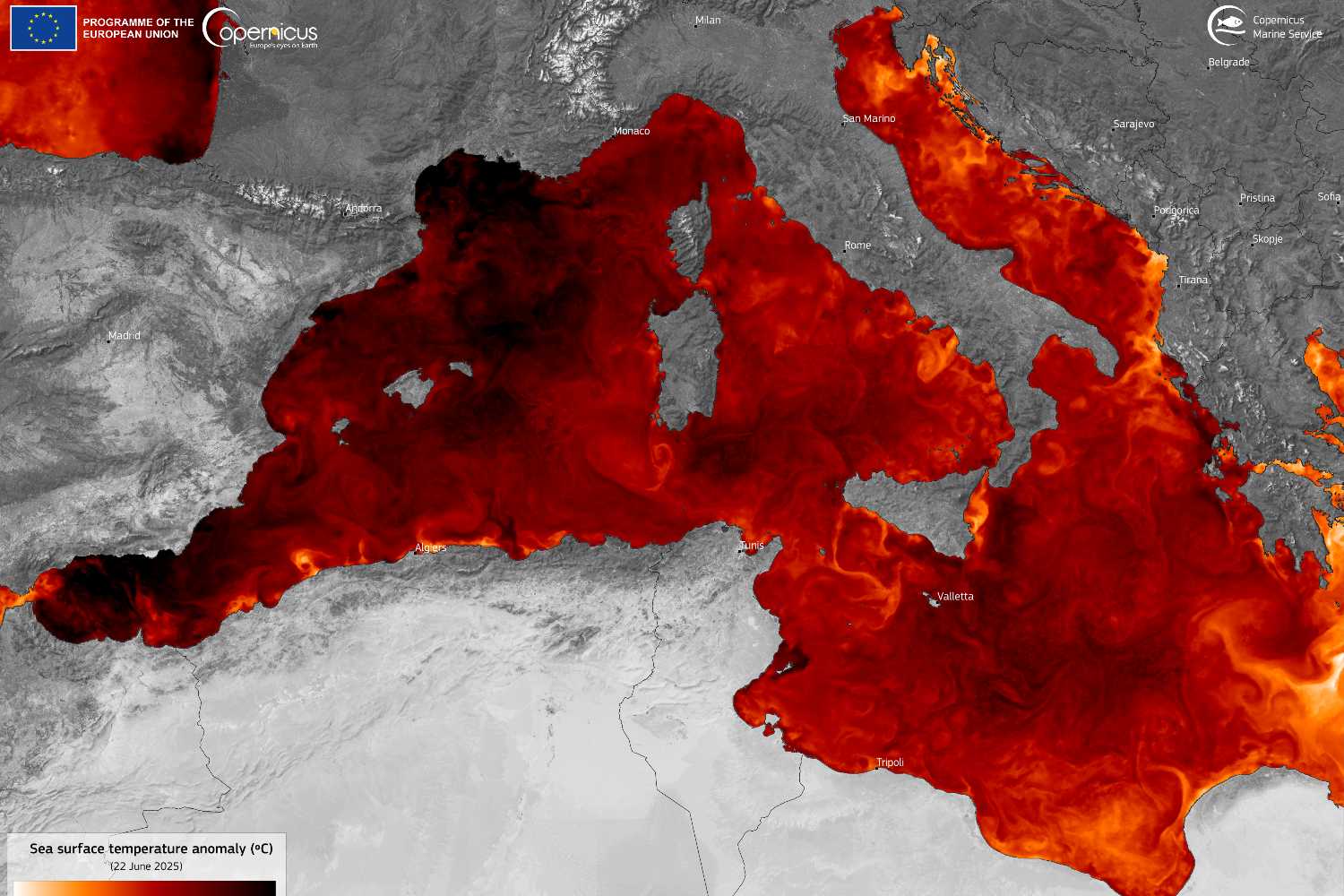Extreme weather events, from deadly heatwaves to catastrophic flooding, are increasingly linked to the ongoing climate collapse. These escalating phenomena require urgent action to address the devastating impacts on lives, cities, and ecosystems.

@Copernicus
There’s something deeply jarring about the images that are flashing across our screens these days. A city of art like Milan, transformed into a murky river, with the Seveso River overflowing, hailstorms, and fallen trees. Athens’ Acropolis, a millennial symbol of Western civilization, closed due to excessive heat. Hailstones the size of eggs smashing through greenhouses, roofs, and windshields in Frusinate. And then there’s Crete burning, Texas flooding, and 1,500 additional deaths in Europe within just a few weeks, all because of the heat.
However, the way we still describe these events — “bad weather,” “emergency,” “extreme season” — trips us up when it comes to grasping the reality of the situation.
This is not just bad weather. This is climate collapse. It’s no longer about warnings from “too pessimistic” scientists or scenarios set in 2100. This is happening now. It’s happening here. Everywhere. All at once. And its devastating effects are hitting lives, cities, economies, and symbols. The climate simply cannot handle it anymore.
The truth behind the headlines
Even the World Weather Attribution confirms this: global warming makes these extreme events “more likely and more intense.” About 4 billion people (roughly 49% of the world’s population) have lived through at least 30 extra days of extreme heat (hotter than 90% of the temperatures observed in their area from 1991 to 2020), with the probability of such events having doubled due to human-induced climate change.
This escalation of extreme events isn’t coincidental; it’s the result of an atmosphere that’s increasingly unstable and charged with energy: hotter temperatures mean more water vapor, which fuels more violent phenomena.
Athens under extreme heat: a symbolic shutdown
And yet, Athens has come to a standstill. The Acropolis closed due to excessive heat is more than just a news headline; it’s a symbolic scene. Culture itself must surrender to the new climatic era. At 44°C (111°F), it’s no longer about sightseeing or working — it’s about surviving.
The silent killer: heat
There’s one essential piece of data that’s often missing from daily bulletins: heat kills. And it does so silently. Just look at the case that went viral of the garbage collector who died after an afternoon shift under extreme heat in Barcelona.
According to preliminary data from Eurostat and the European Environment Agency (EEA), between late June and early July, around 1,500 excess deaths are estimated in cities like Milan, Rome, Lisbon, Paris, and Madrid. The most vulnerable are the elderly, outdoor workers, and those with underlying health conditions. It’s a silent massacre. Just like the fact that even Alaska has issued its first heat alert.
No dramatic images, just merciless statistics. The increase in these deaths is directly linked to the intensification of heatwaves: longer, earlier, and deadlier. Climate models predict that, over the next century, the number of deaths caused by heat could skyrocket in cities, even with efforts to protect the population.
Where floods replace fires
The situation is even worse in Texas: over 100 deaths from what’s being called a “once-in-a-thousand-years” flood. Among the victims were 27 girls staying at Camp Mystic, which was swept away by an unstoppable surge of water.
There are no more “extraordinary” events when they happen every month. Climate collapse is about the disorder becoming the norm.
The Mediterranean: a pressure cooker
If there’s one place that truly embodies today’s climatic paradox, it’s the Mediterranean. According to the latest data, sea temperatures have exceeded +5°C (9°F) above the seasonal average. This is a severe anomaly that changes everything. It feeds sudden storms, accelerates evaporation, and impacts marine ecosystems — fish, algae, and food webs.
In the United States, the situation is the same. Temperatures above 120°F (49°C) in Arizona and Nevada. Record spikes in heat-related deaths. Infrastructure failures. Cities without water. The healthcare system is already in crisis in the poorest areas. The fight for climate survival has already begun. And it’s showing a cruel reality: the most vulnerable people are the least protected.
Is all hope lost?
So, is everything lost? No. And that’s the point. The future isn’t entirely written. Every action today can either slow down — or worsen — what happens tomorrow. We are not powerless. We are guilty if we remain still.
We have the tools, technologies, ideas, and data — we’ve had them for years. We know that reducing emissions, decarbonizing energy, protecting soils, rethinking mobility, and working for climate justice are all possible choices. But what we need is a turning point.
The world is already in the midst of climate collapse, not some future scenario. It’s the continent that’s warming fastest, with direct impacts on daily life and the economy. And even if we are slowing down, that’s not enough: we need an ambitious, resilient, collective transition.
It’s not just bad weather. It’s the price we’re paying, and the bill is rising every day. If humans are causing the disaster, only humans can stop it. And that, ultimately, is the most important piece of news of all.
